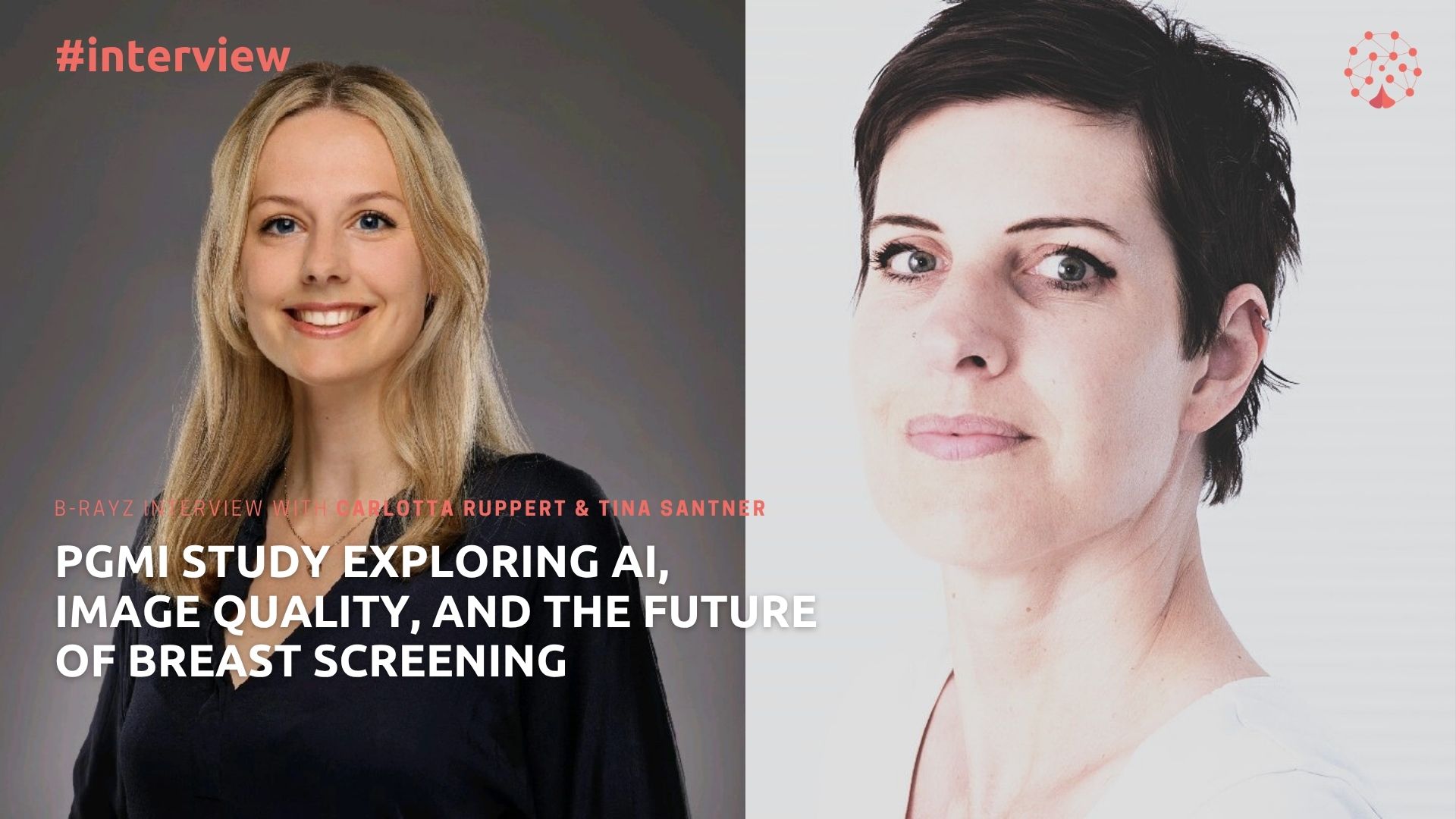The staff shortage in healthcare is pushing many hospitals and medical practices to their limits. Radiology is also affected: In many places, staffing ranks stretch thin, and existing personnel are burned out. This poses a massive threat to patient safety and the quality of medical care. What are the reasons for this and what can HR managers do to close the staffing gaps?
Staff shortages in the healthcare sector: Facts and figures
When vacancies in the healthcare sector can no longer be filled or there are too few employees to maintain high-quality medical care, this is known as a staff shortage. Especially since the Corona pandemic, media reports have been piling up about closed beds, postponed operations and supply bottlenecks in nursing care due to a lack of personnel. But how bad is the actual shortage of healthcare personnel?
Already today, physician density in the U.S. is 2.6 physicians per 1,000 population, below the OECD average of 3.6 per 1,000. As for future trends, the Association of American Medical Colleges (AAMC) paints a bleak picture in its latest trend analysis: depending on model assumptions, there will be a shortage of between 37,800 and 124,000 physicians by 2034. The AAMC report does not provide a detailed breakdown of how large the staff shortage will be in radiology.
The situation is also precarious for radiology medical technologists, according to a 2021 U.S.-wide survey by the Advanced Health Education Center (AHEC). More than 80 percent of healthcare facilities surveyed were struggling to fill open positions at the time of the survey.
What are the causes of the staff shortage?
The shortage of healthcare personnel is becoming an increasing problem not only in the USA, but also in other developed countries. The culprit is an interplay of causes that cannot be easily remedied:
- Demographic development: the main driver of staff shortages in the healthcare sector is the demographic situation. An aging society requires more medical services, but at the same time fewer and fewer young people are joining the workforce. As a result, the gap between personnel requirements and available specialists is widening.
- Higher workload: Advances in medical technology today allow more precise radiological diagnoses, but at the same time create more work. Modern sectional imaging techniques such as MRI, CT and tomosynthesis have drastically increased the volume of images that radiologists have to evaluate. In addition, radiologists are now performing more and more therapeutic interventions, for example in the field of neuroradiology.
- Decreasing workload: While the volume of work is thus increasing, a trend toward a reduction in working hours can be observed at the same time. According to a recent study, the average weekly working hours of U.S. physicians have decreased by about 7.6 percent over the past 20 years: from 52.6 to 48.6 hours per week.
If there is a long-term shortage of staff, a pernicious cycle can ensue: The remaining professionals are increasingly overworked and flee to other sectors or into part-time work.
The effects of the personnel shortage are drastic
Due to staff shortages, highly developed health care systems are becoming increasingly unbalanced: patients no longer receive the best possible treatment because staff shortages have resulted in a lack of personnel resources. When patients have to wait weeks for an MRI scan or a thrombectomy cannot be performed on a stroke patient because there is a lack of staff, it is an extremely frustrating situation for everyone involved.
However, staff shortages not only jeopardize patient safety, but also the health of physicians, nurses and medical technical staff. For example, radiologists in breast cancer detection already suffer from alarmingly high burnout rates. According to the international study “Radiology Staff in Focus“, medical-technical radiology staff are also under high pressure: moderate or severe burnout symptoms were reported in the UK (30%), the USA (36%), France (33%) and Germany (97%), for example.
Thus, there is an urgent need for action to improve working conditions in radiology and to counteract further drift of professionals.
Combating staff shortages in radiology: 5 strategies and tangible options for action
The demographic trend as the main cause of staff shortages in the healthcare sector is irreversible. Under these conditions, what are the specific options for action available to HR managers to attract and retain well-trained and motivated specialists? We propose the following five strategies to counter the personnel shortage in radiology:
1. Contemporary personnel marketing
The basis is formed by contemporary and professional personnel marketing strategies to ensure sufficient supply within the own ranks:
- Active sourcing: today, healthcare facilities with high staffing needs must target and proactively recruit skilled personnel. To fill vacancies more quickly, building a talent pool is highly recommended – this requires intensive collaboration and coordination between HR and the individual departments.
- Target group-specific recruitment channels: Many clinics and practices today also use career platforms such as LinkedIn, various social media channels, online job portals specializing in the medical field – or get support from recruitment agencies – in addition to or instead of classic job advertisements.
- Internships and orientation days: The job description of a qualified radiology specialist is not very well known among school graduates, which exacerbates the future staff shortage. Internships or orientation days can increase visibility and allow employers and trainees to get to know each other.
- Training subsidies and scholarships: The training remuneration for graduate radiology specialists is comparatively low. Training grants therefore create an additional incentive for young people to choose this career path. As a sign of appreciation, they also help to retain young professionals.
2. Creating an optimal working environment
Recruiting personnel is only sustainable if it is possible to retain employees afterwards. One of the most important strategies for combating staff shortages is therefore to create attractive working conditions. What can be done to ensure that well-trained specialists remain loyal to the company?
- Obtain feedback: Employees themselves often know best where the problem lies. HR managers should therefore ask specific questions and obtain feedback in the course of appraisal interviews or (anonymous) staff surveys. Often, employees can also provide well-founded suggestions for solutions to perceived problems.
- More flexible working time models: A major topic today is individual and needs-based working time models that meet the needs of employees. Offers such as part-time work or additional vacation days can increase employer attractiveness. Another option is longer block working hours, which subsequently allow several days off at a stretch.
- Childcare options: In addition to needs-based work schedules and reliable rosters, many mothers and fathers also need childcare options or childcare subsidies to help them get back into their jobs or switch from part-time to full-time.
- Workplace health promotion: To compensate for unavoidable stress, company offers such as nutritional counseling, sports courses, relaxation training or healthy meals in the canteen can be a valuable support.
3. Adapt compensation structures and career paths
Wage increases alone will not solve the staff shortage in the healthcare sector. Nevertheless, radiology professionals in particular are often dissatisfied with their salary and career prospects. The following measures can increase the attractiveness of the profession or employer:
- Performance-based pay and bonuses: Those who take on more responsibility, additional areas of responsibility or work overtime should be appropriately rewarded financially for doing so.
- Expanded career opportunities: The radiology specialist career profile in particular is often perceived as a one-way street. However, there are many opportunities for specialization and further training (e.g., in the field of radiation oncology or radiation protection), which must be promoted and recognized by the company. Internationally, the trend is toward academization of the profession. In the USA, but also in Switzerland and in numerous other countries, bachelor’s degree programs for medical-technical radiology have been opened up, which can contribute to the upgrading of the profession.
4. Promote key future skills of staff
Radiology departments and practices will need, above all, better-trained specialists in the future. Therefore, healthcare facilities should invest in the skills of their staff today and promote lifelong learning through appropriate measures to prevent staff shortages:
- Internal and external training opportunities: Free or subsidized continuing education offers not only contribute to better qualifications, but also increase employer attractiveness. The specific selection of continuing education content should be needs-based and future-oriented (e.g., medical informatics, new technologies).
- Coaching and mentoring models: Due to digitalization and technical progress, work in radiology has become more demanding in recent years. Professionals who return to their jobs after a break or retrain sometimes have difficulties with this. Coaching and mentoring models are one way to support (re-)entrants on an individual basis.
5. Leverage the potential of technical solutions for staff shortage
Despite all efforts to recruit and retain specialists, the staff shortage in the healthcare sector will become a permanent challenge in the future. Radiological facilities should therefore also leverage the potential of modern technology to simplify work processes and relieve existing staff. Especially in radiology, there is a wide range of possibilities:
- Reducing bureaucracy through digitization: Radiologists and radiology professionals today spend a significant amount of their time on non-core activities such as organizing workflow or obtaining missing information. Electronic health records or improved interfaces between radiology and referring physicians could provide relief here. Many radiology practices and departments have now digitized traditional patient questionnaires so that important information is immediately available and no longer has to be transferred manually.
- Automation of work steps: The core areas of examination and reporting can also be simplified and made more efficient through automation and digitization. For example, modern systems now automatically suggest a specific examination protocol after the patient file has been read in, or provide radiology specialists with immediate feedback on image quality.
- Solutions based on artificial intelligence: Many solutions for automating and digitizing work steps in radiology are based on artificial intelligence. The strength of AI applications lies in the fast and precise processing of large and complex data sets. This enables significant efficiency and quality gains along the entire treatment chain: from the selection of the right imaging protocol to automatic image quality checks and AI-assisted reporting. This can relieve staff of time-consuming steps while increasing patient safety.
Staff shortages in radiology: Take action today
Healthcare systems in developed countries around the world are heading for a serious staff shortage. To meet this challenge, it is essential to make the right decisions today and adapt healthcare facilities to the changing conditions. Both personnel management and technical infrastructures and processes must be fundamentally transformed in order to maintain high-quality medical care in the future.








